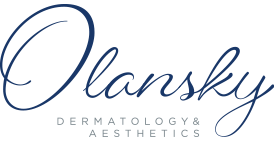We can’t always protect our skin from injury. Accidents happen. While the injury itself can be difficult to bear, the potential for permanent scarring can be even more detrimental. Scar prevention can be done at any age. While it is not possible to completely prevent all types of scars, there are certainly steps you can take to reduce the potential or lessen the severity of scarring.
It is important to first understand why and how scars form. Scarring is part of your body’s natural healing process. When our skin gets injured or damaged, the body triggers a response to form more collagen to repair the area. Unfortunately, this “overdrive” of collagen production develops healing tissues that don’t always contain the normal parts of skin. This atypical patch of healed skin appears as a scar. The depth of the injury, skin color and skin thickness all influence the way the scar looks.
It is also important to realize that all scars are not created equal. There are normal scars that appear thin, small and flat as well as hypertrophic scars that are more raised, thicker and red in color. Keloid scars, however, typically needs professional treatment. Keloids are often genetic and can produce raised, dark scars that extend beyond the actual wound borders. At Olansky Dermatology, we proudly provide keloid scar treatment.
Tips For Preventing Scars
In general, the less work your body has to do on its own to heal the injury, the less likely you will suffer residual scarring. The following steps are important:
- Don’t delay stitches: If you suspect that your skin cut needs stitches, don’t wait. Sewing the skin together in a timely manner will reduce the chances for bacteria contamination and also prevent the skin from trying to partially heal on its own, which can make scarring more likely.
- Keep it moist: Your skin heals best when it is moist. If needed, apply petroleum jelly to the wound and keep it covered to prevent drying out.
- Protect it from the sun: To prevent discoloration on these fresh tissues of healed skin, avoid sun exposure or wear a high SPF sunscreen on the area.
- Don’t pick: This can be a major temptation, especially for kids. However, picking at your scabs disrupts your body’s natural healing process and greatly increases your chances for scarring. It is best to be patient, healing takes time.
At Olansky Dermatology Associates, we can help you reduce scarring. We are experienced skin care experts with the ability to treat normal and keloid scars using the most proven techniques available.

